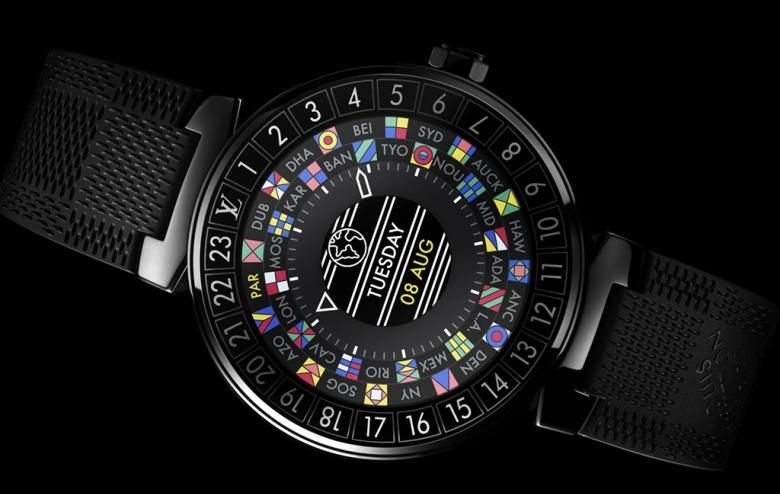Back in 2014, when the admittedly fugly LG G Watch and Samsung Gear Live kicked off Google’s Android Wear-powered hardware releases alongside the slightly prettier Moto 360, very few early smartwatch adopters imagined fashion would become the central focus of the platform in just three years.
Yet here we are, no longer hoping for a third-gen Moto 360 after parting ways with Samsung and likely saying goodbye to Asus as well, instead welcoming luxury Android Wear 2.0 product after product from manufacturers of traditional timepieces, designer handbags, expensive jeans, jewelry and writing instruments.
Following the example of sister LVMH-owned brand Tag Heuer and challenging Fossil Group’s many subsidiaries and partners, Louis Vuitton is unsurprisingly diversifying its portfolio today as a first step into the “internet of things” era.
Apparently, the Tambour Horizon is merely the beginning of the flamboyant company’s active participation in the wearable tech arena, with “nonnegotiable” aesthetics as a key selling point.
Unfortunately, the Louis Vuitton Tambour Horizon collection is even pricier than you imagine, starting at $2,450 for gray and brown models with 42mm cases made in Switzerland from premium stainless steel and your choice of a grand total of 60 interchangeable straps, half designed for men and another 30 keeping the ladies in mind.
An extra touch of all-black elegance costs an additional $450, but aside from glitz and glamour, we can’t say there’s anything special about this latest Android Wear 2.0 effort. The same Android and iOS-friendly software, sprinkled with a couple of proprietary travel apps on top, a standard Snapdragon Wear 2100 processor, respectable 1.2-inch 390 x 390 AMOLED display, decent one-day battery and basic Bluetooth and Wi-Fi connectivity. No heart rate monitor, independent cellular support, GPS or NFC, it seems. Essentially, a spec sheet worth around $250, and a $2,000+ logo.

